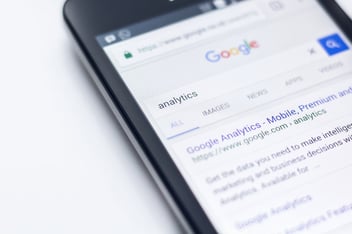Gerard Tonti
The fundraising landscape is constantly changing, with many factors outside of your control. In particular, how you market your organization and offerings will change over time, depending on your audience base and current nonprofit trends.
A key way to stay on top of your nonprofit marketing strategy and make sure it’s doing all it can for your current needs is to ensure your data is organized and up to date. This means you need to have an effective database, or nonprofit constituent relationship management (CRM) system, configured to your organization’s needs.
When your organization has an effectively configured database, you’ll find that you can better communicate and build relationships with your supporters.
In this guide, we’ll walk through some of the top tips for configuring your database and leveraging it to develop relationships with your supporters. These tips include:
- Create smart donor segments.
- Effectively use marketing automation.
- Collect and store feedback from supporters.
- Develop relationships with local companies.
- Conduct prospect research for future outreach.
With the right strategies and the best technology, your organization can craft a plan to continue raising funds and pursuing your mission even throughout challenging times.
Ready to learn more? Let’s get started.
1. Create smart supporter segments.
Creating supporter segments in your nonprofit CRM is the best way to effectively and efficiently reach out to your supporters in a personalized fashion. When you create groups based on their similar qualities, you can address the specific interests of that group through tailored communication.
Therefore, in order to use personalized communications to develop relationships with your supporters, you need to begin with smart segments in your database.
According to Salsa, some of the best segments that your organization can create include the following:
- Major donors and major prospects. You wouldn’t talk to your major donors in the same way you would brand new small-level supporters. Creating segments for major donors and prospects will help you cultivate and steward these groups of supporters.
- Volunteer history. Don’t forget to include individuals who donate time to your organization as well as money. For instance, you may reach out to past volunteers to let them know about upcoming volunteer opportunities, connect with donors for new fundraising campaigns, and reach out to advocacy participants for new initiatives.
- Donation frequency. You may send first-time donors a welcome packet or introductory information. However, your more seasoned donors may, instead, require updates on your latest fundraising and programming activities.
- Geographic location. Knowing the geographic location of your supporters can help you send out invitations to the most relevant audience when you resume in-person events.
- Cause-specific information. If supporters have specific interests related to your mission, consider these segments so you send them information that will most interest them. For instance, animal causes might segment supporters by cat-lovers and dog-lovers.
Once you’ve set up these donor segments in your nonprofit’s donor database, you can start crafting marketing materials that are personalized and will resonate with your audience.
2. Implement marketing automation.
Once you’ve created segments in your database, you’ll be ready to use them as a part of your nonprofit’s marketing strategy. With the use of a fully connected software system, your organization can immediately apply the segments that you’ve created.
Salsa describes this type of software system as SmartEngagement Technology. SmartEngagement strategies allow nonprofits to employ automation to ensure you have the right tools and data available and that you are employing that information to make the best decisions for your organization.
Use SmartEngagement strategies to automate your marketing strategy and save time that you can reinvest in your mission.
For instance, your nonprofit should consider the following automation opportunities:
- With a fully integrated solution, your nonprofit can automatically use the data from donor and volunteer profiles in relevant marketing communications. You can easily address each individual by name and fill out the proper address or contact information with minimal manual labor.
- Automatically save important marketing data metrics from your marketing solution and track them in your CRM system. Expand donor profiles with information about their email open rates, RSVPs sent, and more. This data can then be used to optimize your strategies and more effectively reach out to supporters in the future.
Automating workflows can help save your organization a lot of time and energy that would’ve otherwise been spent on tedious administrative tasks. It allows you to dedicate more of your time and manpower to what really matters — your mission.
3. Collect and store feedback from supporters.
Your nonprofit’s supporters power your mission through funding and volunteer work. They contribute toward a noble cause and are happy to do so because they feel strongly about the mission at hand. Because they make your organization possible, many of your nonprofit’s supporters likely have an opinion about how you run various aspects of your strategy.
Allowing them the chance to provide feedback about your latest campaign, event, or marketing initiatives is a great way to show them that you care about supporter opinions and value their input. It’s also important to implement relevant and effective feedback at your organization in order to maintain relationships with supporters and show that you’ve been listening.
We recommend that you send surveys and request feedback from your supporters to provide them the opportunity to contribute fresh ideas to the organization.
Make sure to save feedback and survey data in your nonprofit’s CRM. Armed with this information, you can identify the shared opinions from your supporters, make adjustments to your strategy, track the engagement of supporters with your survey, and better reach individuals in future communications.
Some of the feedback points that you might request from your supporters include:
- Why supporters chose to contribute to or volunteer with your organization
- How supporters found out about your nonprofit
- How supporters prefer to contribute
- What types of volunteer engagements they participate in
- What additional training or support would be helpful for volunteer opportunities
- How supporters want your nonprofit to reach out to them
- How frequently supporters want to hear from your nonprofit
- The rating supporters would give to your events, donation experience, volunteer experience, and other engagements
- The extent to which they can see and understand the results of their volunteer work and contributions
- Other improvements they’d like to see from your organization
When stored and organized properly, all of these metrics are key to compiling a data-driven marketing strategy. And, according to Accudata’s data marketing guide, 64% of marketing executives agree that data-driven strategies are crucial for success in the modern world. Therefore, your nonprofit can and should expect a higher ROI when you employ data properly.
4. Develop relationships with local businesses.
Your organization probably makes effective use of your nonprofit CRM solution to track the engagements you have with your supporters. However, you can also leverage your software to develop effective relationships with local businesses.
Make sure to save information about the various local businesses interested in a partnership. Businesses that take an interest in a partnership are those with values similar to your organization’s cause. Additionally, viable partners may have numerous employees who donate to, volunteer for, or otherwise actively engage with your nonprofit.
Save information regarding your interactions with these organizations to track partnership cultivation progress. It’s also helpful to save information about business connections that your supporters have in their profiles. For instance, note where supporters work or if they own their own businesses. They may be able to help you make the necessary connections and partnerships.
Relationships with local businesses can come in handy for various aspects of your nonprofit’s strategy such as:
- Procuring auction items for your nonprofit’s (likely virtual) auction events.
- Finding matching gift opportunities for your supporters.
- Identifying volunteer grant opportunities for your supporters.
- Promoting new volunteer and contribution opportunities to an interested audience.
- Asking for sponsorships for upcoming campaigns and events.
Developing these relationships with businesses can be just as beneficial as those with your donors and volunteers. Therefore, you’ll want to take a similar approach to cultivation and stewardship with these businesses.
5. Conduct prospect research for future outreach.
Not only does your nonprofit CRM software help your organization track the current engagement metrics for your supporters, but it can also bolster future engagement by collecting data from outside sources.
Prospect research allows nonprofits to find new opportunities for important aspects of their fundraising, like major gifts and planned giving. The largest gifts and majority of the funding for your organization likely come from these large contributions. According to this article, your largest gifts should make up about 75% of your fundraising revenue.
Prospect research is the process of gathering relevant information about donors and prospects to leverage during fundraising campaigns. As you conduct prospect research, be sure to save the data you find in your donor database. The information you should be saving in your CRM will include both wealth and philanthropic indicators:
- Wealth indicators are those that show the capacity of giving for a supporter. These indications come from data such as your supporter’s real estate holdings, SEC holdings, and contributions made to yours and other organizations.
- Philanthropic indicators show the likelihood of someone contributing to your nonprofit’s mission and should be collected for new prospects. You can gather this information by looking at a supporter’s volunteer history, their duties on nonprofit boards, and contributions made to similar missions.
By conducting effective prospect research and saving the metrics you find, you can see the fundraising capacity of your donors right next to their engagement metrics that you’ve already collected. High engagement and high capacity of giving may indicate a potential major supporter.
Your nonprofit’s CRM is the central hub for data that you collect about your support base. Leveraging this data can ensure smart marketing and further develop relationships with your supporters. These five tips will help you get started. Good luck!




